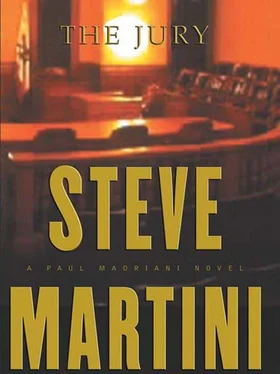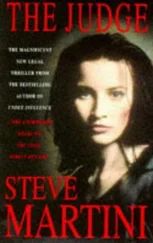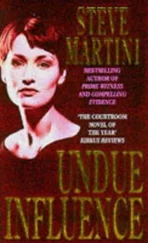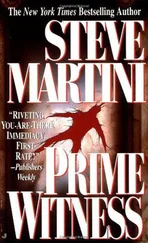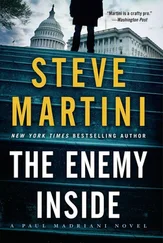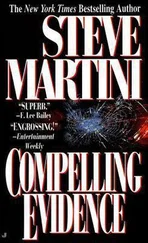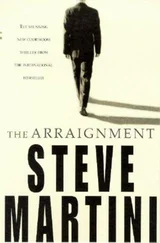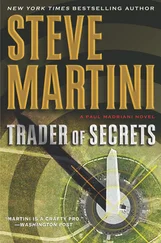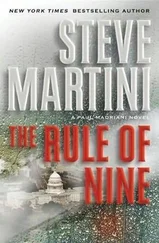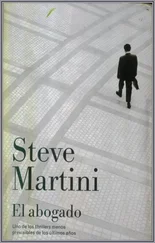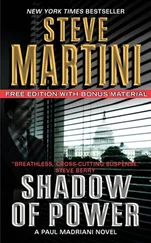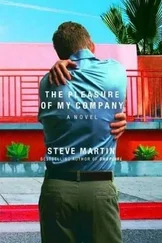Steve Martini - The Jury
Здесь есть возможность читать онлайн «Steve Martini - The Jury» весь текст электронной книги совершенно бесплатно (целиком полную версию без сокращений). В некоторых случаях можно слушать аудио, скачать через торрент в формате fb2 и присутствует краткое содержание. Год выпуска: 0101, Издательство: Penguin Group US, Жанр: Триллер, на английском языке. Описание произведения, (предисловие) а так же отзывы посетителей доступны на портале библиотеки ЛибКат.
- Название:The Jury
- Автор:
- Издательство:Penguin Group US
- Жанр:
- Год:0101
- ISBN:нет данных
- Рейтинг книги:3 / 5. Голосов: 1
-
Избранное:Добавить в избранное
- Отзывы:
-
Ваша оценка:
- 60
- 1
- 2
- 3
- 4
- 5
The Jury: краткое содержание, описание и аннотация
Предлагаем к чтению аннотацию, описание, краткое содержание или предисловие (зависит от того, что написал сам автор книги «The Jury»). Если вы не нашли необходимую информацию о книге — напишите в комментариях, мы постараемся отыскать её.
The Jury — читать онлайн бесплатно полную книгу (весь текст) целиком
Ниже представлен текст книги, разбитый по страницам. Система сохранения места последней прочитанной страницы, позволяет с удобством читать онлайн бесплатно книгу «The Jury», без необходимости каждый раз заново искать на чём Вы остановились. Поставьте закладку, и сможете в любой момент перейти на страницу, на которой закончили чтение.
Интервал:
Закладка:
“That’s true.”
“Were you able to determine what caused these?”
“No.”
“Do you know whether these contusions and lacerations were suffered before death or after the victim was killed?”
“No. It was not possible. The body was in the water too long.”
This was a point covered in his report. Ordinarily, bleeding into the tissues surrounding a contusion or laceration might indicate that it was an injury sustained before death, before the heart stopped beating. In this case, immersion in salt water for two or three days destroyed many of the forensic signs that the state might have followed.
“So it’s possible that these bruises, the contusions and lacerations on Kalista Jordan’s head, were inflicted before death.”
“It’s possible.”
“As I recall from your report, there were three distinct contusions, one on the left side in the parietal area, and two to the back of the head near the right temporal region. Is that correct?”
“I believe so.”
“Would you care to consult your report?”
“No. That’s correct.”
“Were any of these contusions, particularly the two to the back of the head, consistent with blunt-force trauma?”
He thinks for a moment, evaluates the issue, a theologian splitting hairs.
“You understand what I mean by blunt-force trauma, Doctor? The application by force of a blunt instrument used to strike the head of the victim.”
“I understand.” He looks at me sternly as if I’m questioning his credentials.
“It’s possible,” he says. “She could also have fallen, striking her head. Or the injuries could have occurred after she was in the water. Wave action being thrown into rocks. It’s not possible to tell,” he says.
“But it’s possible that these contusions were the result of blunt-force trauma, before the victim died, is it not?”
“Yes.”
“It’s possible, is it not, that they could be the result of the assailant or assailants striking the victim, Kalista Jordan, with a blunt instrument in order to render her unconscious?”
“It’s possible.”
The opening I’m looking for.
“So if one or more of these contusions to the head were the result of blunt-force trauma, isn’t it possible that the victim was not only unconscious at the time of death, but that she may have been unconscious at the time the cable tie was applied over her head, or around her neck, and tightened?”
He thinks about this for a moment, and then finally says: “I don’t know.”
“Isn’t it possible that blows to the head, blows sufficient to cause these contusions, could have rendered the victim unconscious, Doctor?”
The problem for Schwimmer is that he cannot know. A concussion, one sufficient to knock a person unconscious, is virtually impossible to detect, even from tissue slides of the brain following an autopsy. It is difficult to argue with what he cannot know.
He begins to nod in concession. “It’s possible,” he says.
“And if these blows did render the victim unconscious, then there would have been no struggle. No need to slip up behind the victim. No need to prepare the cable tie in advance and no need to attach the tensioning tool before the killer actually used it. Isn’t that true, Doctor?”
“I suppose. If the blows, as you say, rendered her unconscious. We do not know that.”
“But we know that she suffered these contusions.”
“Yes.”
“And we know that they could have been caused, that it’s possible they were caused by blunt-force trauma and that this could have occurred before death?”
“It’s possible.”
I take a long breath. He has opened the door just a crack.
“Let’s assume, for a moment, that the victim was knocked unconscious by blunt-force trauma before the cable tie was applied. Is it not fair, then, to assume that she would be lying down on the ground or the floor, or at least not standing on her own two feet, when the cable tie was applied?”
“I suppose. It’s possible.” He is now slipping behind the curve in the game of possibilities.
“Possible? If she were unconscious, how could she be standing?”
“She couldn’t. She would be in a supine position.”
“Lying down. In fact, collapsed. Isn’t that true?”
“Yes.” Schwimmer can see where I am going, but he can’t avoid it.
“And if this were the case, if she were lying down, then the cable tie could easily have been placed around her neck and the end slipped into the yoke afterward?”
“I suppose.”
“And in that case the assailant would not have worried about which hand was dominant in order to pull the cable tie tight, would he?”
“Oh, I think he would still use his dominant hand.”
“Yes, but if the victim were lying down, we don’t know whether the assailant was standing over her head facing her feet when he pulled the tie closed, do we?”
He sees the problem.
“In that case, the killer would be pulling the cable tie closed with his right hand in order to have the tail of the tie pass from right to left through the yoke. He could be kneeling on her shoulder, reaching across his body and pulling it like he was starting a chain saw. Isn’t that a fact, Doctor?”
“Well, if the relative positions of the parties are changed. .”
“What’s changed is that the victim is down and unconscious,” I tell him. “And if that’s the case, then your opinion as to the killer’s dominant hand is no longer relevant, is it?”
“No. Assuming those facts.”
It wasn’t hard for the cops to determine that David Crone was left-handed, and to tailor their case accordingly.
“So that we’re clear, if the victim were lying down, since she could have been approached from any angle, is there any way to be certain which hand was used to tighten the cable tie?”
He thinks for a moment, looking for some way out, then concedes the point. “No.”
“Nor is there any way to determine the height of the assailant, is there? If the victim were on the ground.”
“No.”
“So the killer could have been a right-handed midget for all we know.”
I don’t get a response from Schwimmer, at least not a verbal one.
“Not to make light of the victim and what she lost,” I say, “but the fact is that all your testimony about the pain and suffering, the fear and agony brought out by Mr. Tannery in his direct, all that would be similarly in error if the victim had been rendered unconscious by one or more sharp blows to the head. Isn’t that a fact?”
“Yes. But we don’t know if she was rendered unconscious.”
“We don’t know that she was not, do we?”
“No.”
“All we know is that someone killed her. We don’t know how tall he or she was, or which hand he or she used.” I don’t make a question of this, something he can argue with.
“That’s all, Your Honor.”
chapter four
She sits on her mom’s lap and looks at me with big brown eyes under a mop of shaggy hair that hasn’t been clipped in months. Penny Boyd doesn’t like having her hair cut, and given her condition, her mother no longer makes her do things she doesn’t like. Penny is nine. She will be lucky if she sees her next birthday.
I first met her with her mom and dad at a PTA function almost a year ago. At the time, Penny seemed fine, just another healthy fourth grader. Her parents, Doris and Frank Boyd, have two other children: twelve-year-old Jennifer, my daughter Sarah’s best friend, and a boy, Donald, who is seven. But Doris and Frank harbor a terrible secret. The family lives under a dark cloud that Penny and her siblings still do not comprehend. I have had to keep the specifics from Sarah and develop codes when talking to other parents when she is around.
Читать дальшеИнтервал:
Закладка:
Похожие книги на «The Jury»
Представляем Вашему вниманию похожие книги на «The Jury» списком для выбора. Мы отобрали схожую по названию и смыслу литературу в надежде предоставить читателям больше вариантов отыскать новые, интересные, ещё непрочитанные произведения.
Обсуждение, отзывы о книге «The Jury» и просто собственные мнения читателей. Оставьте ваши комментарии, напишите, что Вы думаете о произведении, его смысле или главных героях. Укажите что конкретно понравилось, а что нет, и почему Вы так считаете.
